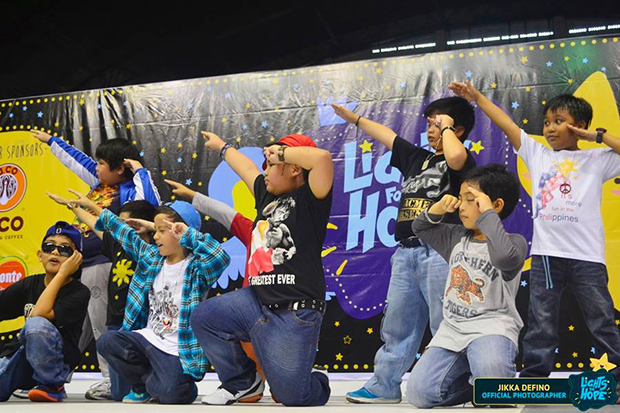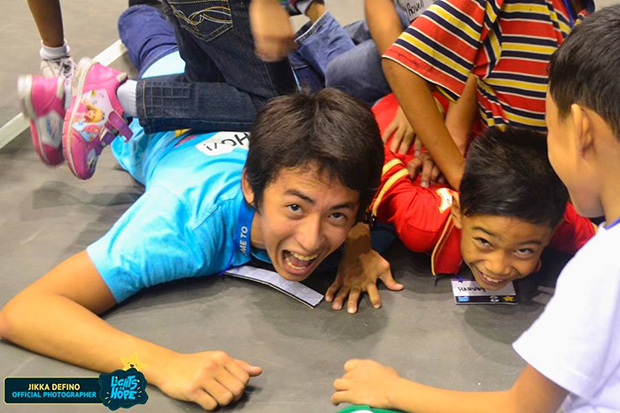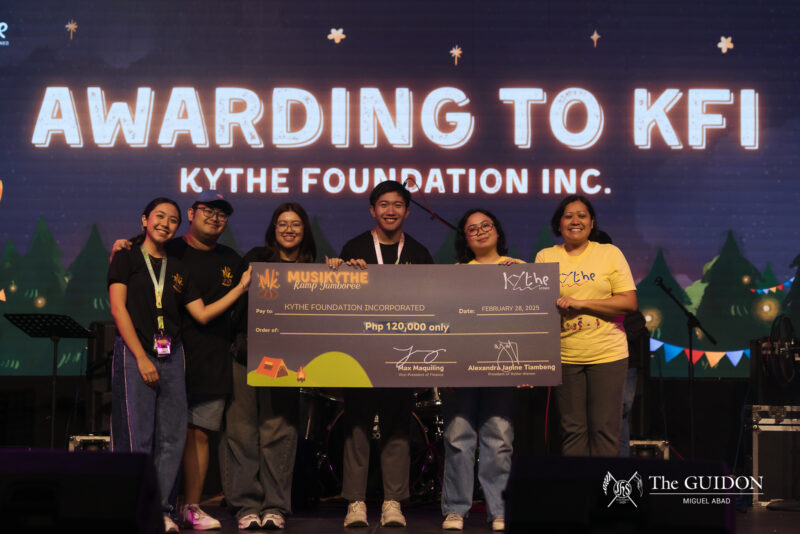THE SPIRIT of Blue Christmas lives on.
Despite initial problems, the annual Blue Christmas event, now rebranded as Lights for Hope, continued to be a source of joy for more than 1,000 children from the Ateneo’s partner communities. It was held at the Ateneo Grade School and the Blue Eagle Gym on November 23.
The rebranding of the project entailed independence from the Council of Organizations of the Ateneo (COA), and greater sectoral participation. Previously a project of COA, this year’s Lights for Hope was organized by the Office of Student Activities (OSA) and the Office of the Vice President (VP) for Social Development.
Before the rebranding, Blue Christmas as a whole referred to the annual Christmas party for children from the Ateneo’s various outreach and partner areas.
OSA Director Chris Castillo explained that, in the old setup, Lights for Hope referred to just the afternoon program of the entire Blue Christmas event. The afternoon program included a variety show organized by the Office of Alumni Relations.
The morning program, on the other hand, involved hosting classes and activities for the children.
Project Head Chi Punzalan said that one of the reasons behind the rebranding was the project’s expansion to sectors outside the Loyola Schools (LS). The organizing team include the following: Ateneo alumni, and students from Ateneo Grade School, Ateneo Junior High School, Ateneo High School and Ateneo Professional Schools.
According to Punzalan, around 1,050 children attended Lights for Hope, mostly from areas handled by the Ateneo Center for Educational Development, Gawad Kalinga, and the Loyola House of Studies. The Office for Social Concern and Involvement and Musmos also sent in children from their areas.
Change in management
When COA evaluated its projects for the year, Castillo said that there was a split decision regarding whether COA should retain the Blue Christmas project.
However, Castillo explained that students, particularly the core team members of the Blue Christmas, “felt strongly about [the project],” which led OSA and the Office of the VP for Social Development to head the project instead.
Castillo further explained that, though it might have seemed wrong to celebrate at a time when parts of the country are still recovering from the onslaught of Typhoon Yolanda, the Blue Christmas “advocacy was worthwhile.”
Reimagining the opportunity
Though this unexpected change in management came just months before the event, the organizers saw it as an opportunity to reassess the project. As a result, Lights for Hope also underwent a few changes in its program and logistics.
According to Castillo, the organizers decided to change the name to “Lights for Hope” because it was “equally as known as Blue Christmas” and it was a name “more familiar to the alumni.”
Meanwhile, Project Head Punzalan added that the team wanted to “bring something new this year,” and so they felt the need to change the entire program.
However, due to the time and financial constraints, radical changes to the program could not be done.
Most of the parts of the program of Blue Christmas, such as holding class sessions in the morning and a variety show and inflatables in the afternoon, were no different from the previous years.
Although the program remained the same, psychology senior Aimi Chiba, one of the student facilitators during Lights for Hope, said that the previous year’s Blue Christmas seemed to be a bigger event.
“There were more kids, and I think there were also more volunteers,” she said in a mix of English and Filipino.
However, Chiba added, “I also think the activities for the kids this year were a bit lacking. Last year, they (children) got free ice cream and other stuff, but this year it’s just the slide and the program (variety show).”
Problems and compromise
Apart from the changes in management, most of problems the Lights for Hope team encountered occurred during the pre-planning stage, which were mainly caused by issues concerning programs, logistics and lack of funds.
According to VP for Social Development Atty. Jaime Hofileña, the project’s budget became “more and more of a concern” as the day of the event approached.
However, Hofileña said that this resolved itself because of the “willingness and self-effacing [attitude] shown by the LS students in paring down certain cost items.”
For example, he said that instead of having new shirts made for identification and security purposes during the event, the volunteers wore shirts they already owned, but each committee followed a specific color scheme. They also made use of color-coded armbands.
Castillo also said that only 60 percent of the proposed budget was spent for the project.
Community gathering
Punzalan said that Blue Christmas was previously perceived by many as a kind of outreach event for LS students. According to her, the vision for Lights for Hope was for it to be regarded instead as a chance for Ateneans to gather as a community with the children from the various areas.
“[It’s like] breaking the gap or taking down the fences,” she said. “It’s like inviting them into our home, our campus, and sharing this one day with them having fun,” Punzalan added.
The participation of the groups from sectors outside the LS was limited to the hosting classes. As such, further expansion and more multi-sectoral involvement among the Ateneo communities are seen as the next steps for Lights for Hope in the coming years.
Castillo believes that, in the future, other Ateneo communities should also be involved, such as the Professional Schools.
Hofileña agreed with Castillo. He said that his office attempted for greater multi-sectoral involvement; however, “time constraints” prevented them from adjusting the format to allow wider involvement from many other units.
Hofileña’s office is currently in the process of evaluating the outcome of this year’s Lights for Hope.









